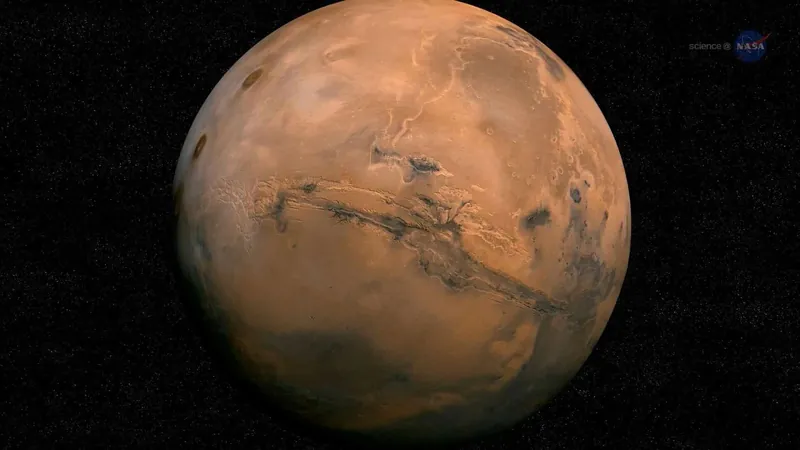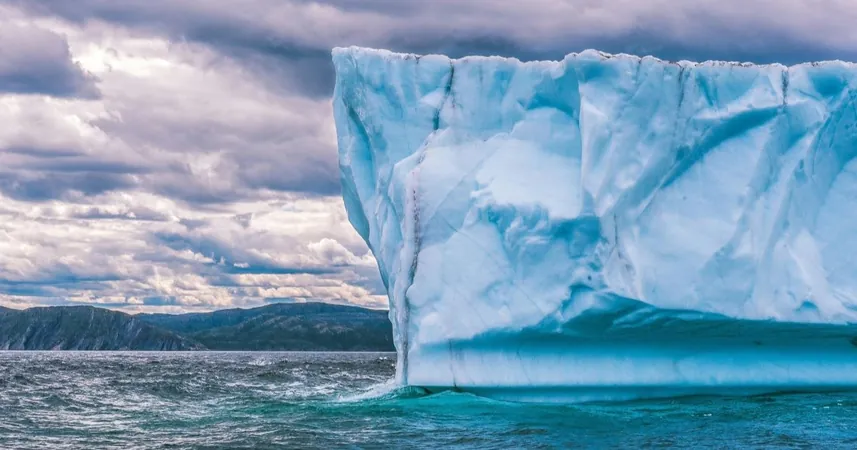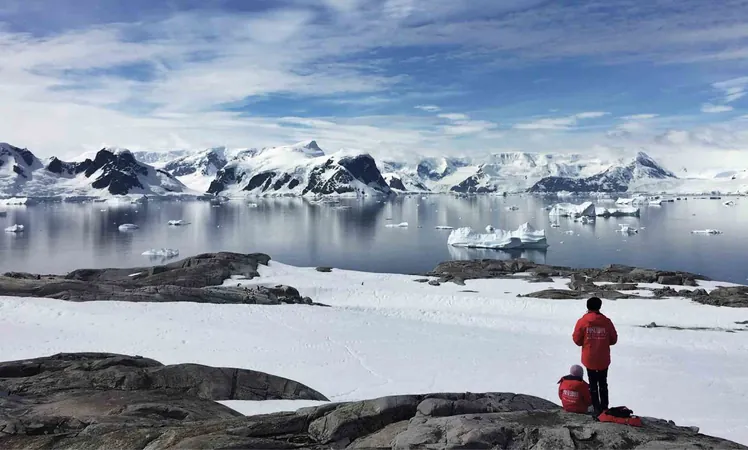
Unlocking Mars: Researchers Pinpoint Ideal Landing Spot Powered by Ice
2025-06-26
Author: Amelia
Mars Missions Take a Giant Leap Forward
As the dream of sending humans to Mars edges closer to reality, researchers are zeroing in on the perfect landing site for these much-anticipated missions in the 2030s. A geologist from the University of Mississippi believes she may have found the ideal spot, one that holds the key to survival on the Red Planet.
Water on Mars: The Essential Resource
In the quest to explore Mars, understanding the availability of water is critical. Erica Luzzi, a postdoctoral researcher at the Mississippi Mineral Records Institute, has led a team examining valuable data collected from various Mars missions. Their focus? The potential presence of water.
“If we’re sending humans to Mars, you need H2O—not just for drinking, but for fuel and numerous applications,” Luzzi stated. “Finding it near the surface is advantageous because we can extract it easily.” This vital resource identification technique is known as in situ resource utilization, which is a game-changer for space exploration.
Revealing Mars' Hidden Jewels
Luzzi’s team uncovered signs that water ice may be located just beneath the Martian surface in the Amazonis Planitia region, making it a strong candidate for the first human landing. Analysis employs high-resolution imagery from the HiRISE camera aboard the Mars Reconnaissance Orbiter, which has spied even the tiniest vehicles on Mars since its launch in 2006.
This mid-latitude region of Mars offers an intriguing balance: plentiful sunlight for energy and cool temperatures to preserve ice. Luzzi noted, “These mid-latitudes could become the future gateway for human exploration.”
The Lifeblood for Extended Missions
Reaching Mars presents a significant challenge—resupply from Earth could take months. Co-author Giacomo Nodjoumi from the Italian Space Agency emphasized the importance of finding local resources, stating, “For the Moon, a round trip takes about a week. For Mars, we must be prepared to operate without resupplies for months.”
The vital resources retrieved from this ice would be essential for generating oxygen for breathing, water for hydration, and even fuel for the journey back.
Investigating the Ice: The Next Frontier
While high-res imagery provides promising clues, physical samples are crucial to truly understand the extent and composition of the ice. Future missions, whether driven by humans or robotic rovers, will need to descend onto Amazonis Planitia to confirm the ice’s viability.
“Our next step involves radar analyses to evaluate the characteristics of the ice,” Luzzi explained. Understanding the ice layers and their conditions is critical for planning future missions.
Astrobiological Significance: Is There Life on Mars?
Investigating this potential water ice isn’t just about human survival; it may also reveal insights into the past habitability of Mars. Luzzi remarked, “On Earth, ice can preserve evidence of previous life forms. It could help us uncover if Mars ever had the conditions to support life.”
The study, titled "Geomorphological Evidence of Near-Surface Ice at Candidate Landing Sites in Northern Amazonis Planitia, Mars," will be highlighted in the Journal of Geophysical Research Planets, pushing the frontiers of our understanding of Mars and opening doors for future exploration.









 Brasil (PT)
Brasil (PT)
 Canada (EN)
Canada (EN)
 Chile (ES)
Chile (ES)
 Česko (CS)
Česko (CS)
 대한민국 (KO)
대한민국 (KO)
 España (ES)
España (ES)
 France (FR)
France (FR)
 Hong Kong (EN)
Hong Kong (EN)
 Italia (IT)
Italia (IT)
 日本 (JA)
日本 (JA)
 Magyarország (HU)
Magyarország (HU)
 Norge (NO)
Norge (NO)
 Polska (PL)
Polska (PL)
 Schweiz (DE)
Schweiz (DE)
 Singapore (EN)
Singapore (EN)
 Sverige (SV)
Sverige (SV)
 Suomi (FI)
Suomi (FI)
 Türkiye (TR)
Türkiye (TR)
 الإمارات العربية المتحدة (AR)
الإمارات العربية المتحدة (AR)